How to Watch All the ‘Planet of the Apes’ Movies In Order
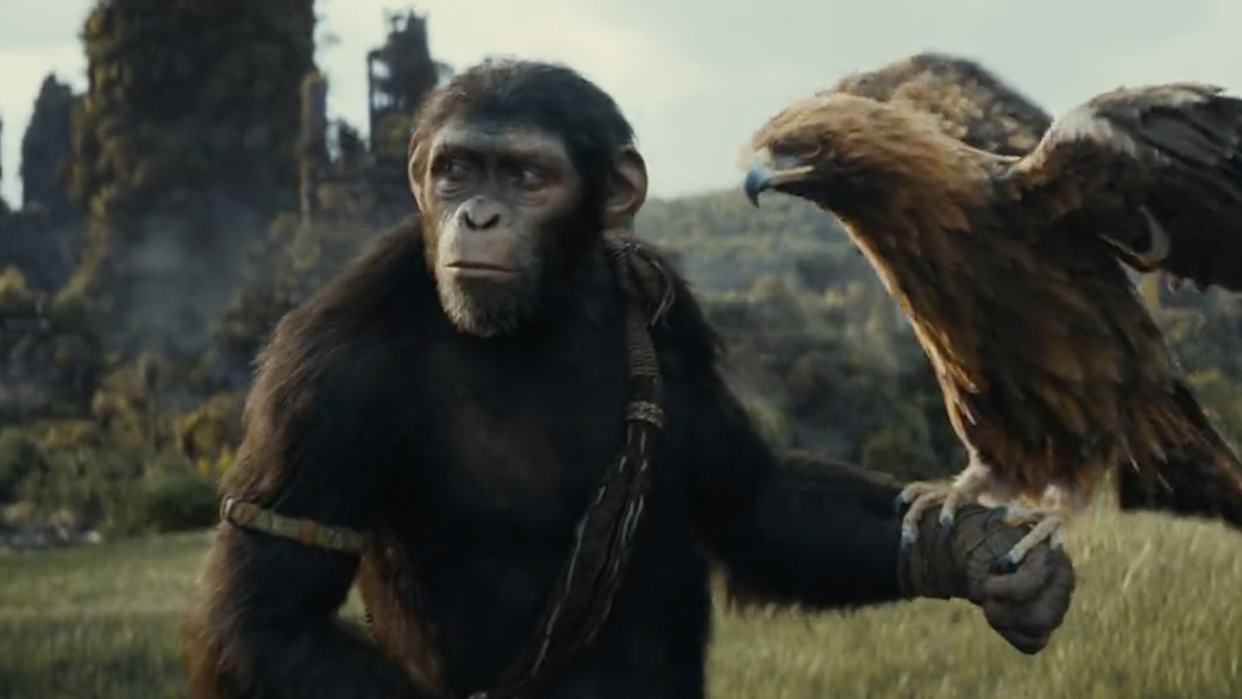
"Hearst Magazines and Yahoo may earn commission or revenue on some items through these links."
Apes. Together. Strong!
Since the original Planet of the Apes hit theaters in 1968, being an adaptation of Pierre Boulle’s novel from 1963, moviegoers have been in awe over its foreboding future where Earth’s dominant species isn’t humankind but apes. Set over 2,000 years from now, humans have regressed into dumb, feral beasts. Our descendants yield to walking, talking, horse-riding, gun-toting simians who’ve built their civilization atop the rubbles of our own.
Across multiple sequels and reboots that span generations, the Planet of the Apes franchise – spawned from producer Arthur P. Jacobs, who passionately believed in Boulle’s novel – has maintained cultural relevance through its provocative themes like power, prejudice, rebellion, collective hubris, animal rights, and how communication can lead to peace or war.
Unlike other sci-fi sagas like Star Wars, Star Trek, Alien, and Terminator, Planet of the Apes is a fundamentally cynical saga. The movies are decidedly not about the triumphs of individual heroism and bravery in the face of evil, but rather the need for a community to stave off the apocalypse. Unfortunately, as the many Planet of the Apes movies tell us, neither man nor ape can ever see the bigger picture.
For those looking to experience the Planet of the Apes films in some kind of organized way, you’re in luck. Not only is the series straightforward (at least compared to other franchises), but the flexibility of the saga’s stories means it’s your call which movie and era to start. Despite how the movies can be all over the place in terms of the actual time periods they take place, they conveniently follow a linear story, so it’s easy to follow it along from start to finish.
So get your stinking paws off your damn, dirty phones and kick back as we at Men’s Health introduce you to one of the most quality science fiction movies in history. (For clarity, we are focusing on only theatrical movies. We are excluding the non-canon TV series from 1974, and the equally short-lived animated Return to the Planet of the Apes.)
What are all the Planet of the Apes movies?
The first order of business is to know what and how many movies we’re dealing with. In release order, all the original Planet of the Apes movies are:
Planet of the Apes (1968)
Beneath the Planet of the Apes (1970)
Escape From the Planet of the Apes (1971)
Conquest of the Planet of the Apes (1972)
Battle for the Planet of the Apes (1973)
In 2001, Tim Burton helmed a big budget remake of the original 1968 film, also titled Planet of the Apes. Most critics didn’t like it. (But it made a lot of money, even doing better in its opening weekend than Fox’s own Star Wars: Episode I – The Phantom Menace two years earlier.) Ten years later in 2011, a new reign began. While these “modern” movies were conceived as a reboot with its own canon – thus being incorrect to call it a prequel series, or anything of the sort – there are many nods to the originals. They’re also fantastic movies.
In release order, all of the modern/reboot Planet of the Apes movies are:
Rise of the Planet of the Apes (2011)
Dawn of the Planet of the Apes (2014)
War for the Planet of the Apes (2017)
Kingdom of the Planet of the Apes (2024)
Both the original and reboot/modern eras tell separate stories. So whichever era you dive into, remember to start with either 1968’s Planet of the Apes or 2011’s Rise of the Planet of the Apes first. Our recommendation is to start with Planet of the Apes (1968) and proceed in release order.
Planet of the Apes (1968)
The original that made everyone scream at its now spoiled “twist ending.” Directed by Franklin J. Schaffner and written by former blacklisted screenwriter Michael Wilson (who rewrote a previous script by The Twilight Zone’s Rod Serling), Planet of the Apes stars cinema legend Charlton Heston as astronaut George Taylor who, along with two others, awakens from hypersleep after their ship crashes on a distant planet. Estimated to be in the year 3978, the astronauts discover the planet is ruled by apes: militaristic gorillas, bureaucratic orangutans, and intellectual chimpanzees who practice science and medicine.
Meanwhile, mankind are primitive, mute creatures hunted for sport and subject to experimentation. As Taylor’s presence causes a ruckus among ape society, he befriends two sympathetic chimps, Dr. Cornelius (Roddy McDowall) and Dr. Zira (Kim Hunter) who help him find the truth about man’s fall and apes’ rise. It’s probably not a spoiler anymore to say that this “planet of apes” is Earth, as revealed in one of the most iconic parting shots in film history. But exactly how the world came to be this way stays a mystery – for now.
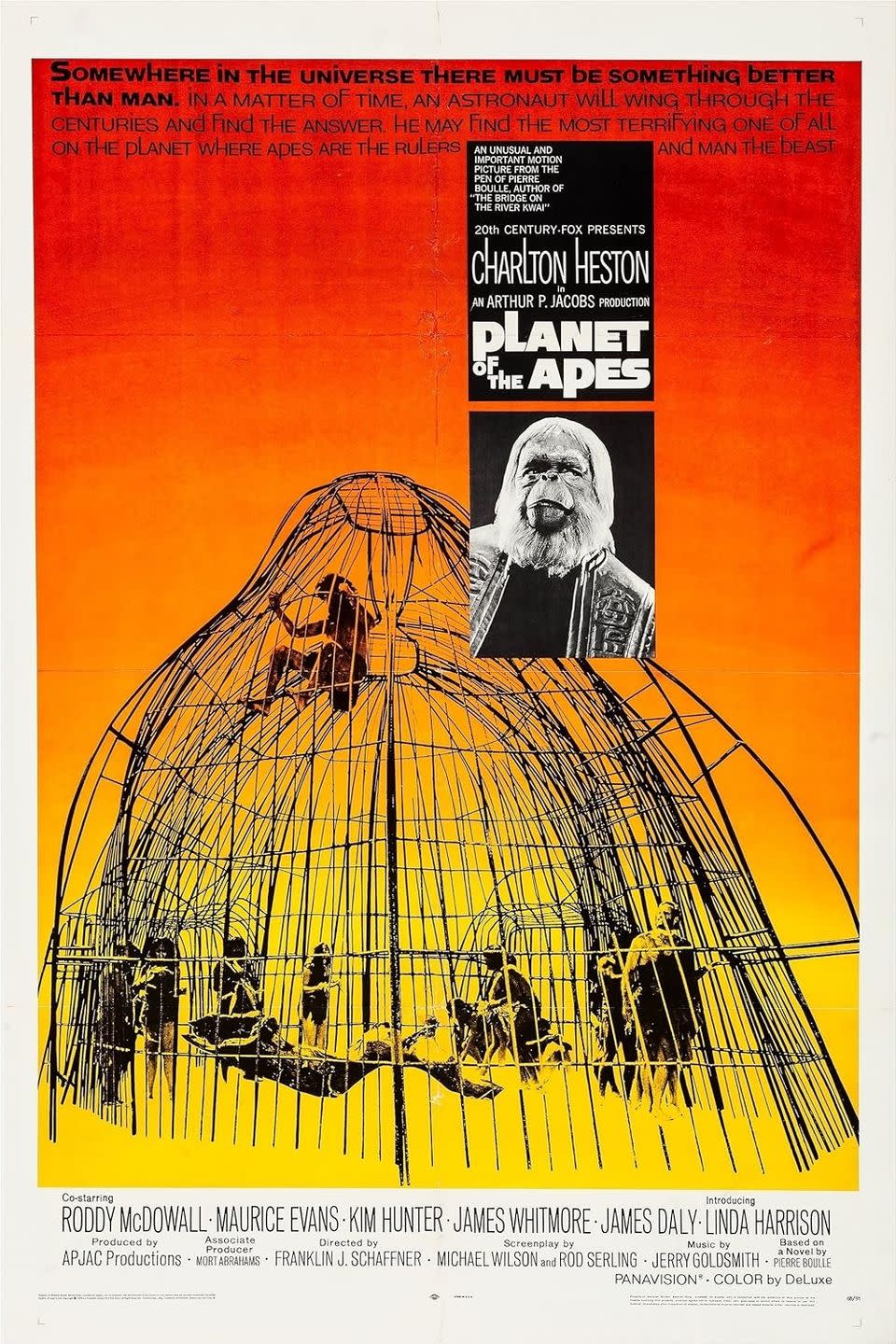
Beneath the Planet of the Apes (1970)
Picking up from its predecessor, Beneath the Planet of the Apes sees the return of Charlton Heston and Linda Harrison (as Taylor’s beautiful silent companion Nova) as Taylor explores the Forbidden Zone, in the hope of finding out more about how apes came to rule. At the same time, another astronaut from Earth’s past named Brent (James Franciscus) has been dispatched to locate and rescue Taylor. Somehow even darker than the first movie, Beneath the Planet of the Apes ends in literally explosive fashion. Compare its ominous ending to most other franchise sequels today, movies that stubbornly refuse to shut the story for good, and you can’t help but applaud in awe at the ballsy way it states: This is the way the world ends.
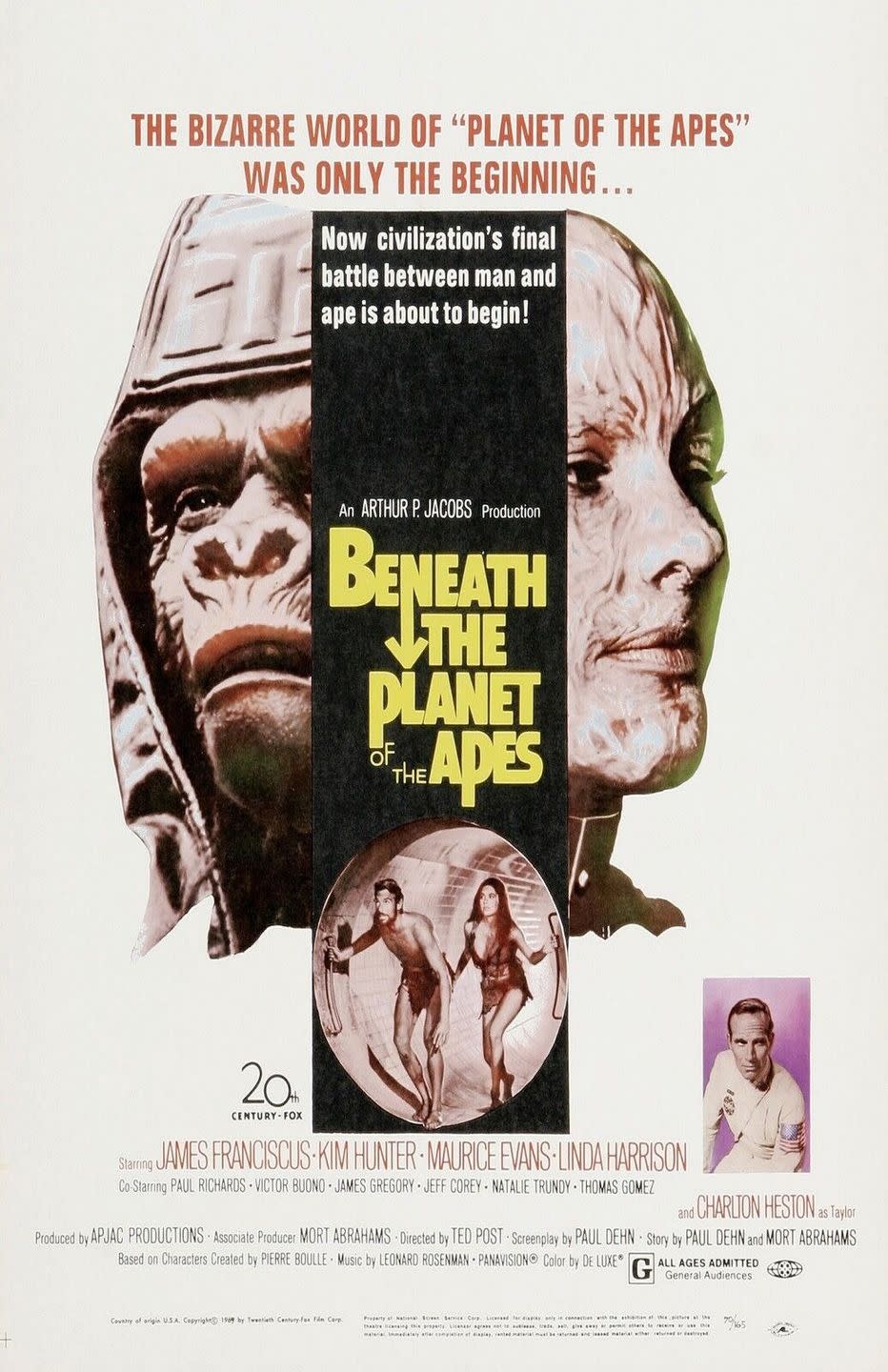
Escape From the Planet of the Apes (1971)
The third in the series, Escape From the Planet of the Apes follows Dr. Cornelius and Dr. Zira (again played by Roddy McDowell and Kim Hunter respectively). Offscreen during the ending of Beneath, Cornelius and Zira (along with Dr. Milo, played by Sal Mineo) use Taylor’s ship to safely escape the exploding Earth. They wind up in the past, in the year 1973. Flipping the script from the first movie, it is now three apes who must navigate human society. They do so with the help of two human scientists, Dr. Otto Hasslein (Eric Braden) and Dr. Stephanie Branton (Natalie Trundy), as well as a charismatic circus owner named Armando (Ricardo Montalbán), all of them sympathetic to the apes.
While Escape From the Planet of the Apes starts out lighter in tone than previous movies – see Cornelius and Zira shop, drink booze, and enjoy hotel bubble baths – the movie eventually returns to its familiar brand of cynicism and politically-charged villainy, with humans all too quick to assert their supremacy and prevent their downfall. Escape might be too tonally dissonant for some, in how much it flip-flops between whimsy and pitch-black tragedy, but it’s a stand-out movie in an already stand-out series.
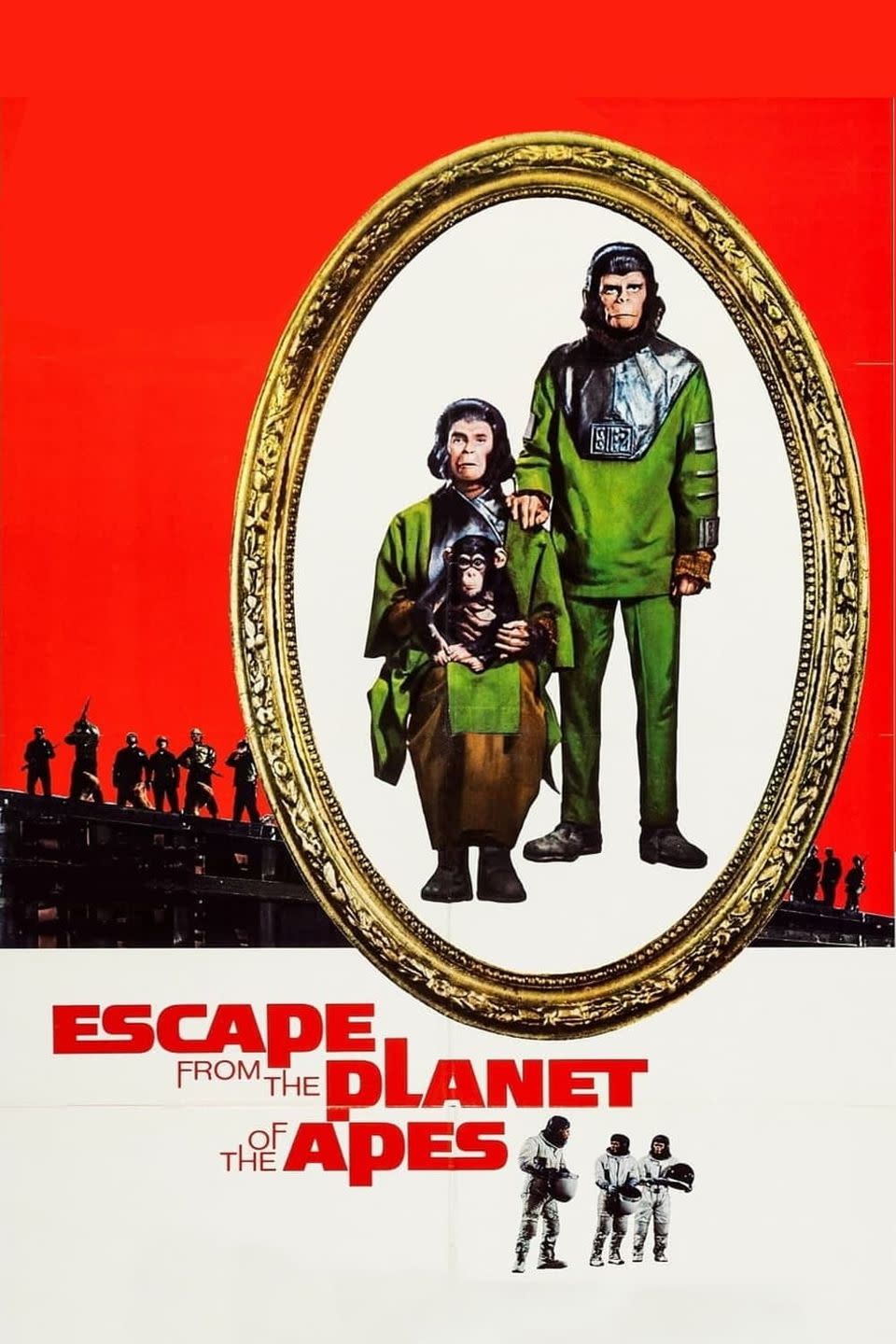
Conquest of the Planet of the Apes (1972)
Set over 20 years after the events of Escape, the sequel Conquest of the Planet of the Apes from director J. Lee Thompson sees Cornelius and Zira’s grown son, Caesar (Roddy McDowall, in his third appearance and second role in the franchise) who is still under the care of Armando (Ricardo Montalbán). In the years between Escape and Conquest, what Cornelius warned has come true: A virus wiped out all dogs and cats, leading humans to adopt apes.
But because apes are very smart creatures, they are now a class of slaves who are bossed around and abused by their human masters. Caesar, being the only ape who can talk and a fugitive at large, leads his fellow apes into a rebellion against man. Conquest of the Planet of the Apes is heavy on both action and its political allegories, with explicit undertones of the historical slave trade colliding with a speculative vision of what the 1990s might look like.
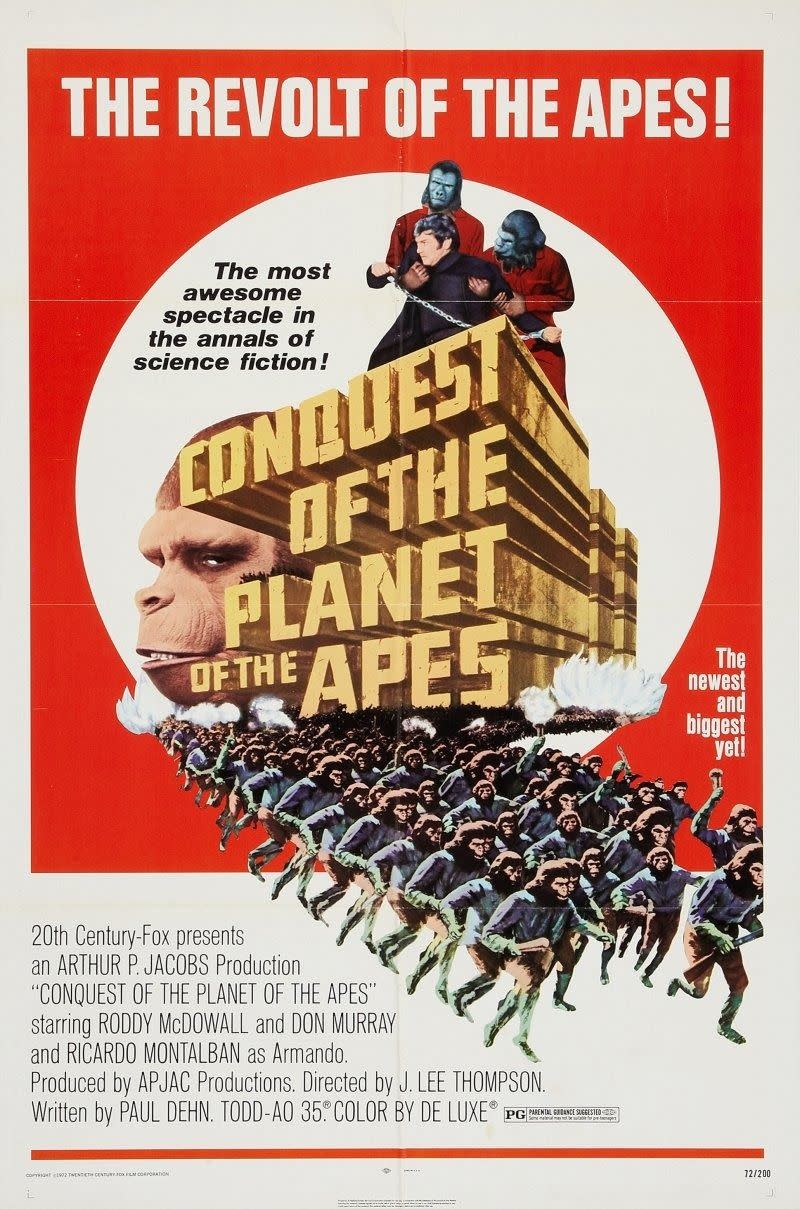
Battle for the Planet of the Apes (1973)
The last movie in the original series, J. Lee Thompson returns to the director’s chair for Battle for the Planet of the Apes. With a framing device of an orangutan recalling the story in the year 2670, Battle picks up in the aftermath of a nuclear war that started in Conquest. Roddy McDowell returns as Caesar, who tries to create a peaceful civilization where man and ape live in harmony. He stands opposed by the militant gorilla Aldo (Claude Akins), who wants only apes to walk the Earth. Unliked by critics and still one of the least popular sequels in the series, it’s no wonder that Battle for the Planet of the Apes put the franchise in hibernation for a long time.
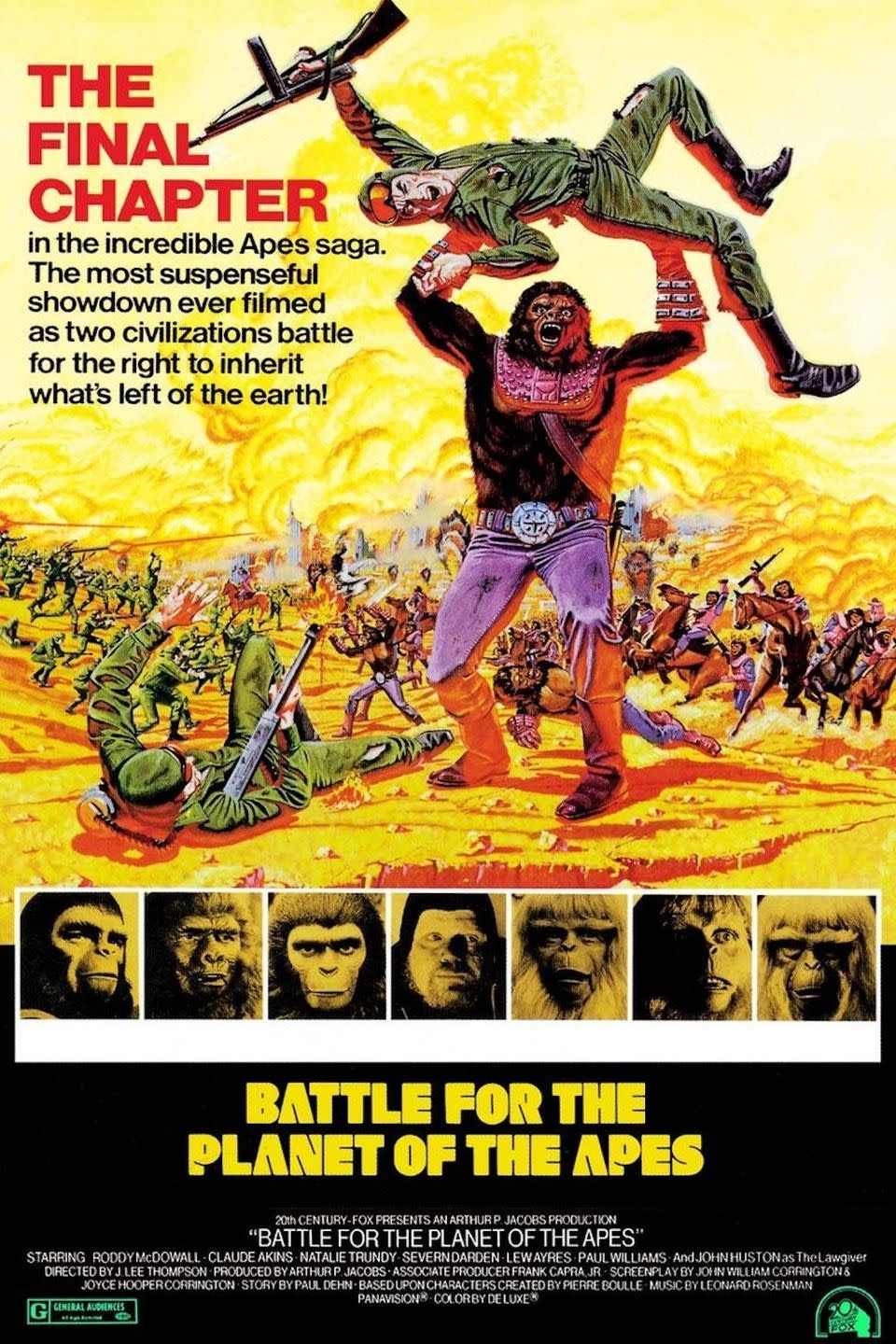
Optional Side Quest: Planet of the Apes (2001)
After a long development process that included many scripts and major directors like Peter Jackson, Oliver Stone, and Chris Columbus attached, the first Planet of the Apes movie for the 21st century came from Batman and Edward Scissorhands director Tim Burton. Conceived as a ground-up remake of the 1963 novel and 1968 movie, Planet of the Apes stars Mark Wahlberg as astronaut Leo Davidson who winds upon a planet with talking apes. (I mean, what else?)
With a shortened production schedule, from cameras rolling in November 2000 and wrapping in April 2001 – all to make a July 2001 release date – the usually careful pre-production process and visual effects work were rushed. This caused headaches for Burton behind the scenes. Ultimately the results spoke for themselves, as Burton’s Planet of the Apes was panned by critics and failed to launch a new era. In the 2003 book Tales From Development Hell by David Hughes, Burton quipped he’d “rather jump out of a window” than direct a sequel.
Because the movie stands totally on its own, it’s up to you to watch or skip. (We suggest skip.)
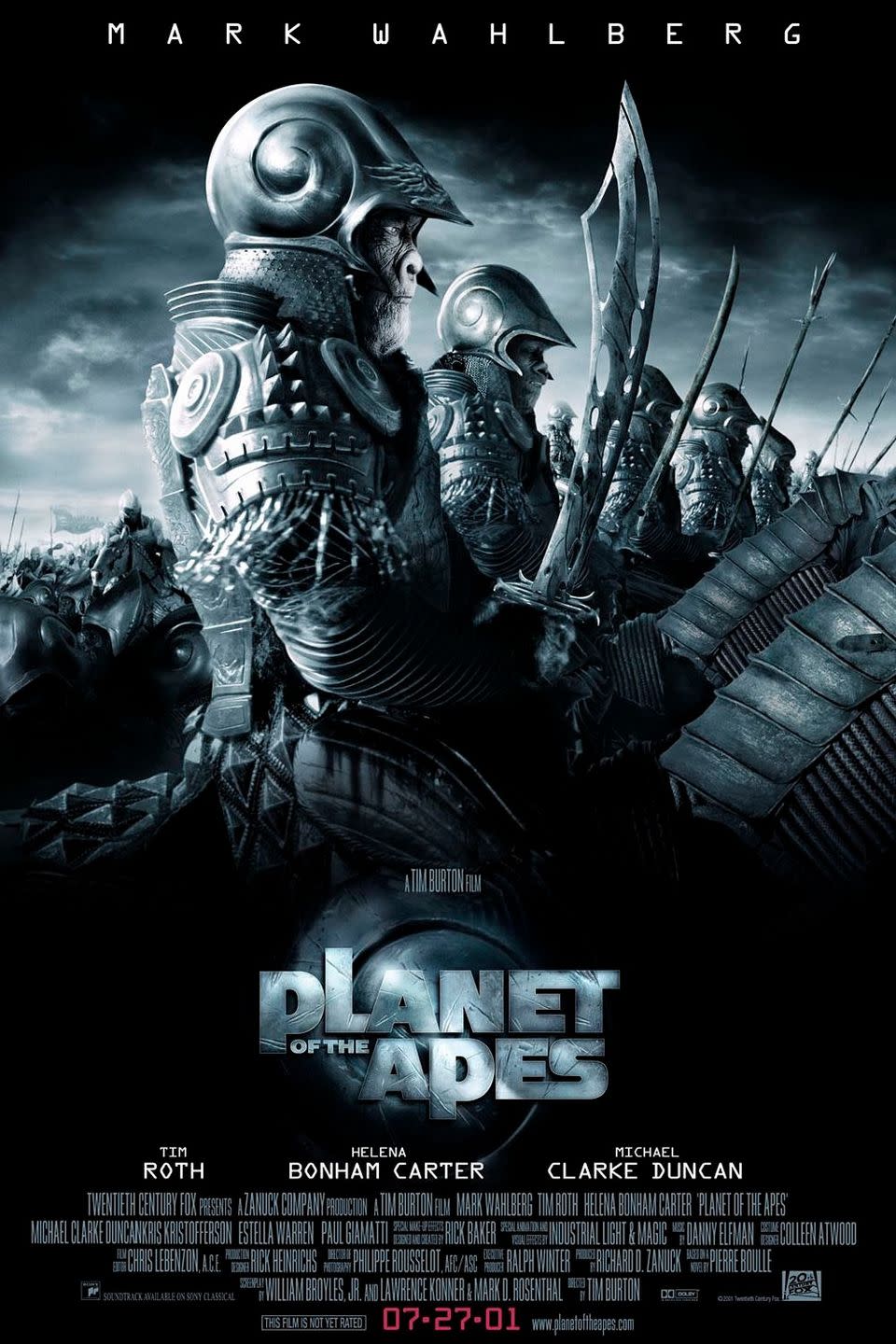
Rise of the Planet of the Apes (2011)
In 2006, screenwriter Rick Jaffa came across newspaper articles about problematic pet chimpanzees. The idea intrigued Jaffa as much as it reminded him of the Planet of the Apes films. Working with his wife Amanda Silver, they wrote what would become Rise of the Planet of the Apes, a rebirth of the series imbued with touches of modern, 21st century science (i.e. genetic engineering).
Directed by Rupert Wyatt, Rise of the Planet of the Apes takes place in contemporary San Francisco. A chemist, Dr. Rodman (James Franco) seeks a cure for his father’s Alzheimer’s by testing drugs on chimpanzees. One chimp, Caesar (played in mo-cap by Lord of the Rings’ Andy Serkis) demonstrates unparalleled intelligence, including communicating through sign language. Over a riveting 105 minutes, Caesar rises as a revolutionary who frees other apes from the zoo, with an epic climax between apes fighting cops on the Golden Gate Bridge. Separately, a dangerous strain of the Alzheimer’s cure spreads around the world, creating a deadly pandemic the likes of which might be too familiar to anyone who lived through 2020.
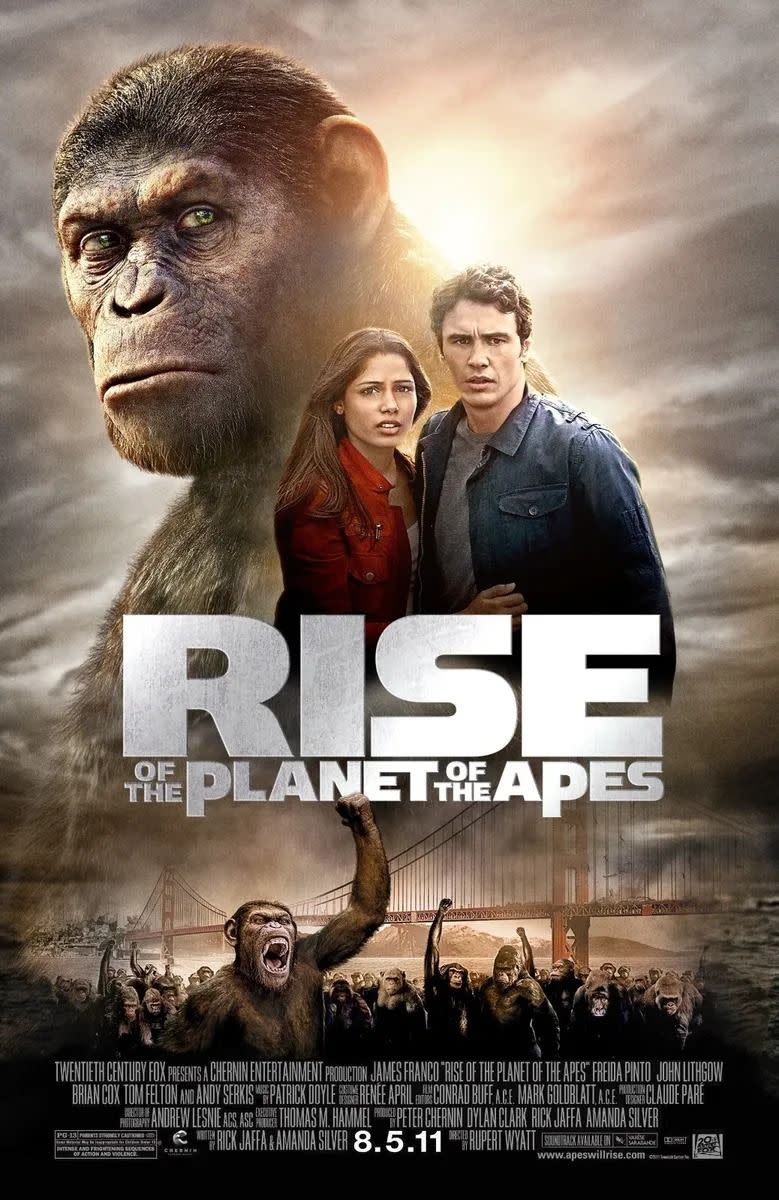
Dawn of the Planet of the Apes (2014)
The first of two Planet of the Apes movies from The Batman director Matt Reeves, Dawn of the Planet of the Apes sees Andy Serkis return as Caesar. In the aftermath of the “Simian Flu” that virtually destroyed human civilization, Caesar tries to keep control of his expanding community of apes, all of them too ready to seize the Earth as theirs to conquer. All the while, human survivors – played by actors Jason Clarke, Keri Russell, Gary Oldman, Kodi Smit-McPhee, Kirk Acevedo, and more – try to pick up the pieces and restore the world. The two species walk a razor-thin wire of coexistence, the fires of war just one spark away from igniting. Breathtaking and ambitious, Dawn of the Planet of the Apes isn’t just one of the best movies in the series but one of the finest science fiction epics of 21st century cinema.
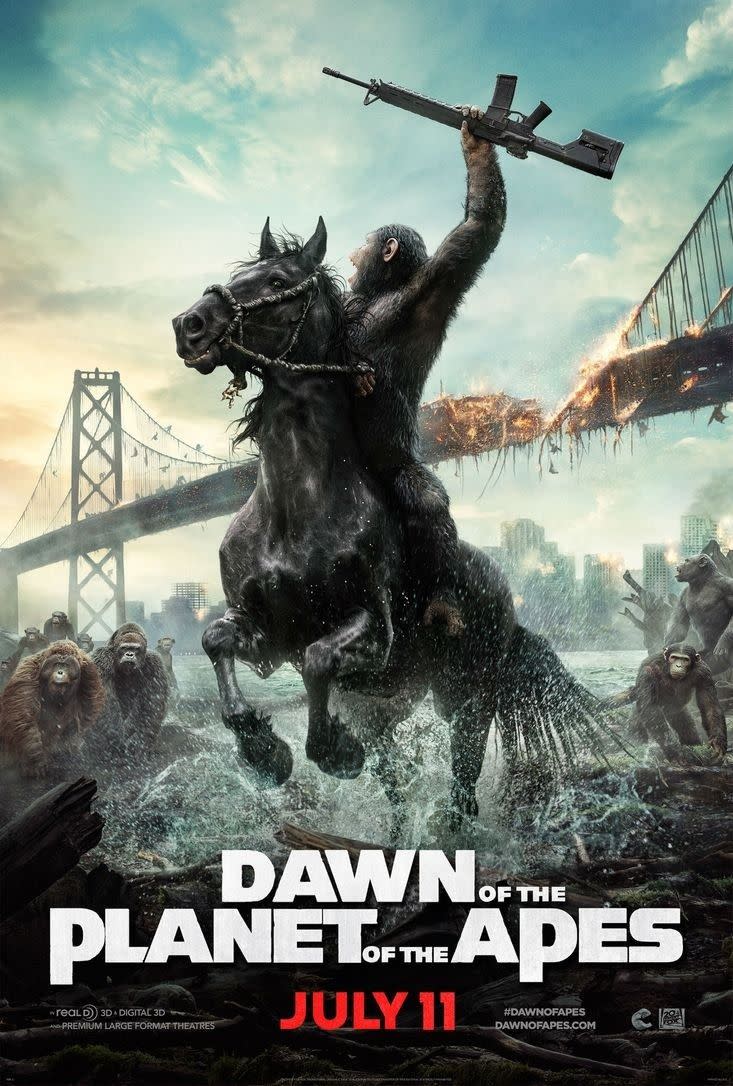
War for the Planet of the Apes (2017)
For War for the Planet of the Apes, Matt Reeves returns as director in the third and last story of Andy Serkis’ Caesar. True to its title, humans and apes are now engaged in full-scale war to claim Earth. Caesar still leads the apes, while the ruthless and arrogant Colonel McCullough (Woody Harrelson) leads the human militia “Alpha-Omega” who fashion themselves as mankind’s only hope for survival. After Alpha-Omega nabs a serious win, Caesar seeks revenge while ironically trying to keep what he’s never had: his humanity. Magnificent and expansive in the way old Hollywood Biblical epics used to be, War for the Planet of the Apes pulsates with the fever of war, existing as proof that crowd-pleasing blockbusters need not be slapdash slop.
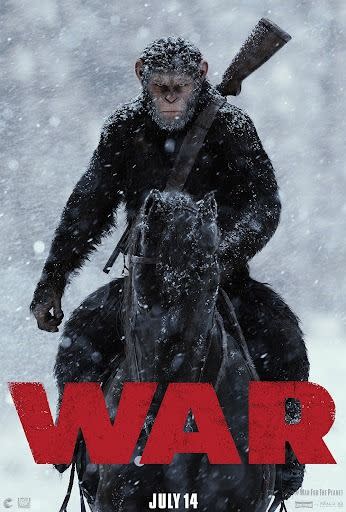
Kingdom of the Planet of the Apes (2024)
With Matt Reeves now residing in Batman’s Gotham City, director Wes Ball and writer Josh Friedman pick up the baton for Kingdom of the Planet of the Apes. Set 300 years after War for the Planet of the Apes, the movie brings audiences far into the future where humans are subservient to apes. Noa, a young chimp hunter (played by Owen Teague) meets a human woman named Mae (Freya Allan). Together, the two embark on a journey where Noa learns the truth of humanity and Earth’s past, all of which challenge the crazed preachings of a charismatic ape king named Proximus Caesar (Kevin Durand). Another fine entry in the series, Kingdom of the Planet of the Apes wrestles with concepts like legacy and how none of us can control what future generations learn from us.
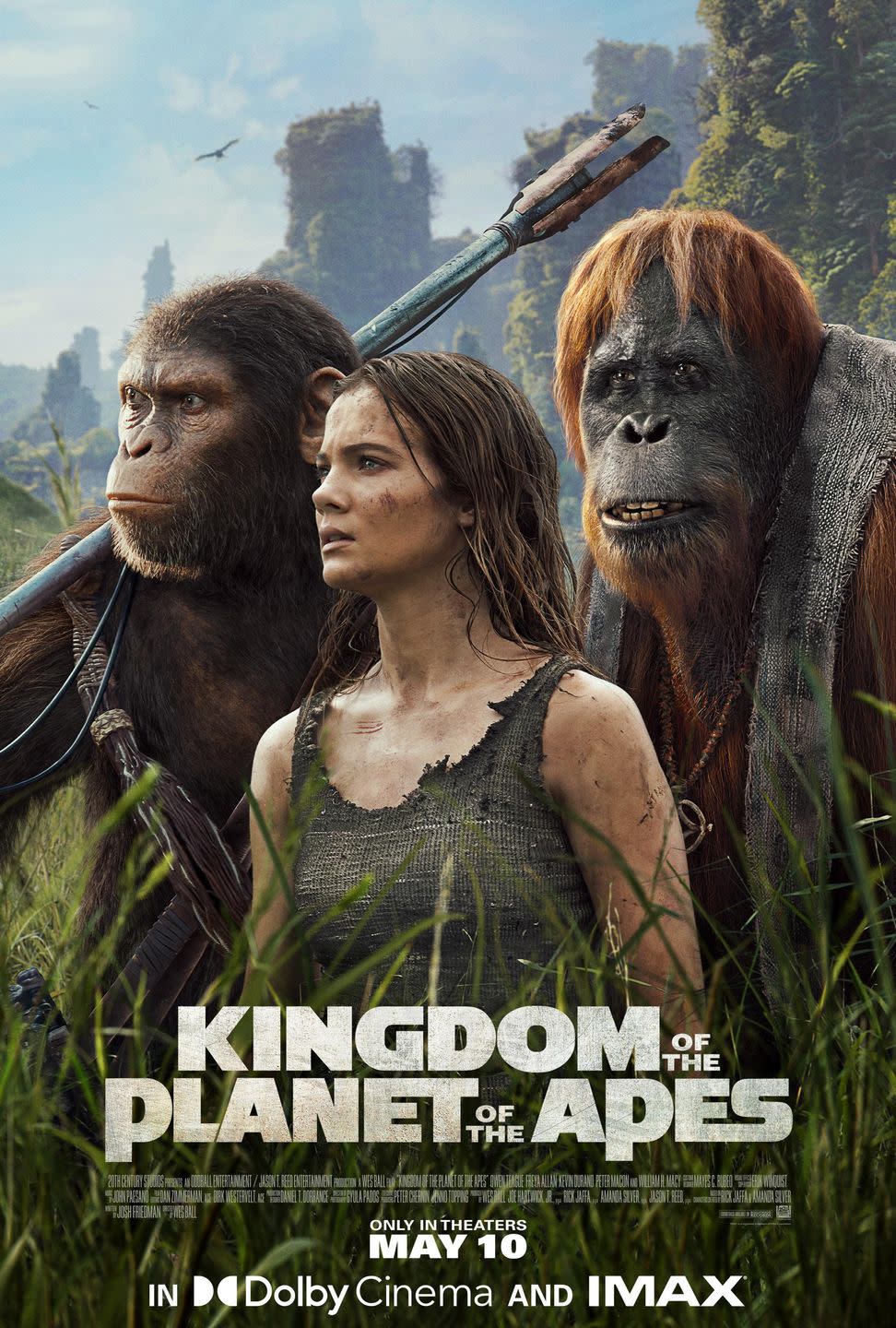
You Might Also Like
